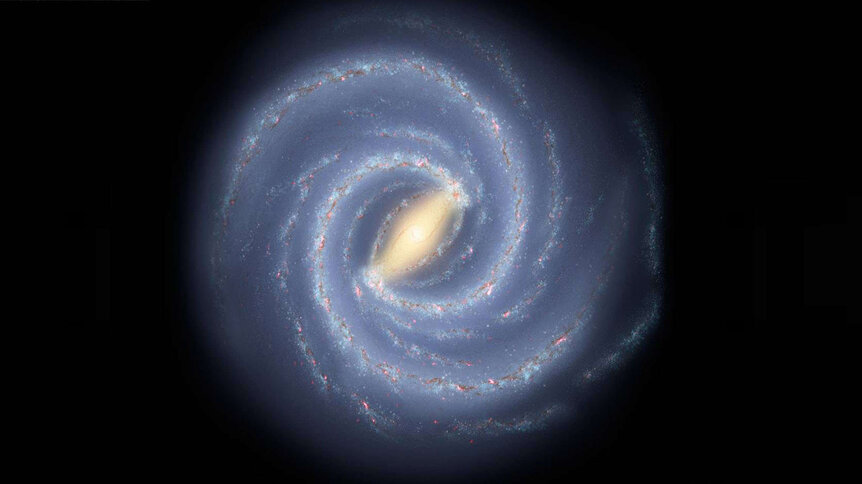Create a free profile to get unlimited access to exclusive videos, sweepstakes, and more!
What is spewing weird radio signals from the middle of the galaxy?

You think you know the galaxy you live in until something bizarre appears almost out of nowhere (and no, it isn’t aliens).
When the Australian Square Kilometer Array Pathfinder (ASKAP) picked up on something unusual, it wasn’t just a known object acting strange, but something that could be a completely new type of object never observed before. What is now known as ASKAP J173608.2-321625 erratically emits radio signals from near the center of the galaxy. The problem is that no one really knows what that means—and there is nothing else like it.
Researchers led by Ph. D. student Ziteng Wang of the University of Australia are determined to find out how this object can be identified. Their study was recently accepted by The Astrophysical Journal. What they do know is that it can only be seen in radio waves, and ASKAP is one of the most sensitive radio telescopes that exists. The only issue is that, despite its wide field of view, it only covers about 0.07 percent of the sky, which makes mysterious objects like this difficult to find.
“We discovered this source in one of the ASKAP surveys called VAST, which is designed to discover radio sources which turn on and off,” Wang told SYFY WIRE. “Since the source turns on and off irregularly (at least it has in the observations we have made up until now), it is also impossible to design an observation to catch it when it is on.”
If Wang and his team are not yet able to definitively say what this thing is, at least they know what it isn’t. Flaring stars were one possibility, but to qualify as one, the object would have to give off light in the visible part of the spectrum, which was nonexistent. Its radio signals also hugely surpass the brightness of stars. It couldn’t be an X-ray binary system because it was emitting radio waves instead of X-rays. Taking a closer look at where it was the spectrum cleared up any uncertainties about that and the possibility of it being a gamma-ray burst.
ASKAP J173608.2-321625 doesn't behave like anything else when it comes to its uneven pattern of flickering on and off. That is another reason it can’t possibly be a gamma-ray burst—those are usually one-offs. Supernovas are even less likely. Though the change in radio waves emitted by a supernova can be measured, it is usually measured in years, while with this object, variations show up in days or weeks. Never mind that supernova bursts are also one-offs.
The only known type of object ASKAP J173608.2-321625 might be is a pulsar somewhere in the interstellar medium, but only if the all that star gas is warping how ASKAP interprets the pulsar signal. This is still highly unlikely. So is there anything it is even close to? Try galactic center radio transients (GCRTs), which are just as mysterious. Wang is considering them as a possible explanation or at least a similar type of object this one can be compared to.
“They are both highly polarized and have a steep radio spectrum, and the flux density for both of them varies,” he said. “They are both also located near the galactic center. Neither of them have counterparts in X-ray or near infrared wavelengths. we don’t even know if all GCRTs share a common origin; it is hard to say.”
At least 80 GCRTs and similar objects that variably emit radio waves have been identified near the galactic center in the past few years. Radio variables are thought to emerge from instabilities in binary systems that involve neutron stars and black holes. If GCRTs don’t even originate the same way, it could be possible that Wang has hit on something. If ASKAP J173608.2-321625 is not a GCRT but another type of known object, it could really push the limits of that object’s definition. There just needs to be more research done on them.
“We would like to observe the object for a longer time when it is radio bright,” Wang said. “As it has not been seen in any other wavelengths, more detailed radio observation will be help us locate the object in the visual spectrum. Unfortunately, since we don’t know when the source turns bright again, that can be troublesome.”



























